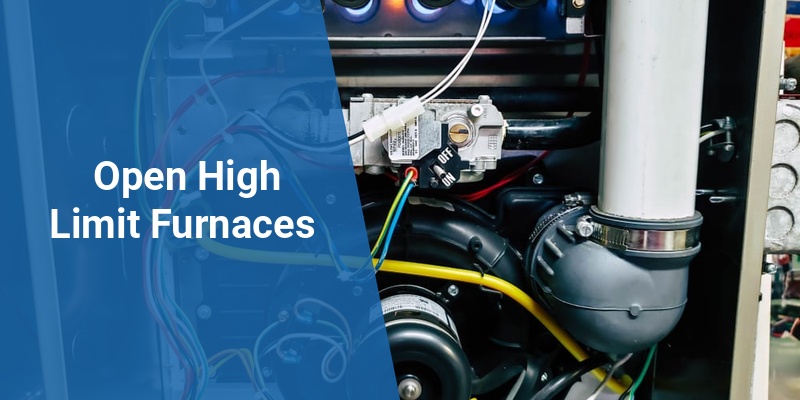An open high limit furnace is an essential component in HVAC systems, designed to protect heating equipment from overheating and potential damage. This critical safety device automatically shuts off the furnace when the internal temperature exceeds a safe threshold, enhancing both system longevity and household safety. This article explores the function, types, installation, and maintenance of open high limit furnaces, helping homeowners and technicians understand their importance and ensure efficient operation.
| Aspect | Description |
|---|---|
| Function | Shuts off furnace at unsafe high temperatures to prevent damage and fire hazard |
| Types | Open high limit, closed limit, and combination safety switches |
| Key Features | Thermal sensor, cut-off mechanism, manual reset options |
| Benefits | Prevents overheating, protects equipment, ensures safety |
| Installation | Proper placement within furnace heat exchanger area, electrical connections |
| Maintenance | Regular testing, cleaning, and replacement if faulty |
What Is an Open High Limit Furnace Switch?
An open high limit furnace switch is a temperature-activated safety device installed within the heating system. It functions as a fail-safe by monitoring internal furnace temperatures and cutting power when temperatures rise above a predefined safe limit. Unlike closed limit switches that remain closed until tripped, the open type is designed to open its electrical contacts when heat increases, interrupting furnace operation.
This switch usually includes a thermal sensor and a manual or automatic reset button, ensuring reliable protection against overheating. Its role is vital in preventing fires, equipment damage, and hazardous conditions within residential and commercial heating systems.
How Does an Open High Limit Furnace Switch Work?
The open high limit switch operates based on the principle of temperature sensing. It contains a bi-metallic strip or a thermistor that expands or triggers when heated. Once the furnace’s temperature exceeds the preset limit (typically between 180°F and 240°F depending on the furnace model), the switch opens the electrical circuit, shutting off the gas or electric power to the burner.
This interruption stops further heat generation, allowing the furnace to cool down and preventing overheating that could damage components or create fire hazards.
Types of High Limit Switches Found in Furnaces
| Type | Description | Typical Use |
|---|---|---|
| Open High Limit Switch | Opens to break electrical circuit when limit exceeded | Used as a primary safety shutoff in standard furnaces |
| Closed High Limit Switch | Usually closed, opens only if temperature goes too high | Additional safety layer in dual-switch systems |
| Combination Switches | Combine limit switch with rollout switch for flame detection | Provides multiple safety functions in one device |
Importance of the Open High Limit Switch in Furnace Safety
Open high limit switches are critical for preventing furnace overheating, which can lead to malfunction, structural damage, or fire. Overheating may occur due to blocked airflow, dirty filters, or malfunctioning blower motors. When the temperature reaches unsafe levels, the high limit switch stops combustion immediately.
Failing to maintain or replace a faulty open high limit switch can compromise safety, causing dangerous conditions such as flame rollout or damage to the heat exchanger. Proper functioning ensures that furnaces operate within safe temperature parameters, protecting both property and occupants.
Call 888-906-9139 for Free Local HVAC Quotes – No Obligation, Just Savings!
Installation and Location of Open High Limit Furnaces
Installation of the open high limit switch requires careful placement within the furnace heat exchanger or near the burner compartment where temperature monitoring is most effective. Proper electrical wiring is essential for the switch to interrupt power accurately during temperature spikes.
Professional HVAC technicians typically install and calibrate these switches to ensure precise temperature settings and reliable cutoff operation. Incorrect placement or installation can lead to nuisance trips or failure to protect.
Maintenance Tips for Open High Limit Furnace Switches
- Regular Inspection: Visual inspection for signs of wear, corrosion, or loose connections.
- Function Testing: Tests should be done during routine furnace servicing to ensure the switch trips at the correct temperature.
- Cleaning: Dust and debris accumulation can affect sensor accuracy—clean the area around the switch carefully.
- Replacement: Replace any switches that show wear, erratic behavior, or failure to reset properly.
Common Problems and Troubleshooting
High limit switches can cause furnace shutdowns if malfunctioning or if the furnace overheats. Common issues include:
- Incorrect limit settings: May cause premature shutoff or fail to trip when needed.
- Dirty air filters or blocked vents: Lead to overheating and frequent limit switch trips.
- Faulty wiring or connections: Prevent the switch from functioning properly.
- Wear and tear: The thermal components can degrade over time, leading to inaccurate temperature sensing.
To troubleshoot, check the air filter, vents, blower motor, and wiring first. If these are clear, test or replace the high limit switch.
Open High Limit Furnace Switch vs. Other Safety Devices
| Device | Function | Comparison |
|---|---|---|
| Open High Limit Switch | Protects furnace from overheating by cutting power | Primary safety device for high temperature cutoff |
| Flame Rollout Switch | Detects flames escaping burner area and shuts off gas | Prevents fire hazards from flame rollout, complements limit switch |
| Pressure Switch | Ensures proper venting before ignition | Protects against venting failures, not temperature related |
Modern Advances and Smart Integration
Recent furnace models incorporate digital sensors and smart diagnostics replacing or supplementing traditional open high limit switches. These technologies provide more accurate temperature monitoring, automated alerts, and integration with home automation systems.
However, the basic principle of a high limit switch remains central to furnace safety, ensuring devices react instantly to overheating and protect homeowners effectively.
